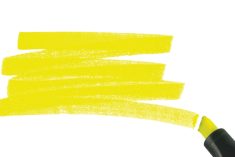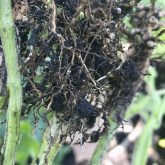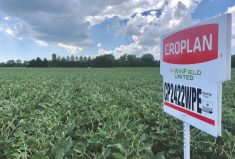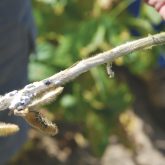Soybean inoculants have undergone considerable change in the past 30 years, evolving from non-sterile to sterile formulations in the 1990s and then to an almost complete reliance on the Bradyrhizobium japonicum bacterial species, with other strains added during the first decade of the 2000s, although primarily as nodulating triggers or plant growth-promoting rhizobacterium (PGPR).
Now, that reliance on B. japonicum may be about to change, particularly with the arrival of Lalfix Duo SL Proyield, developed by Lallemand Plant Care. Last January, a story in Grainews (“New strain of rhizobia enters the soybean inoculant game”) detailed Lallemand’s discovery of Bradyrhizobium elkanii combined with the incorporation of Delfita acidovorans.
Read Also

Producers aren’t panicking over tariffs and trade threats
The influence of tariff and trade uncertainity on farm business decisions.
The latter species was originally found in a canola field in Canada and is another plant-growth-promoting rhizobacterium (PGPR). With this new inoculant, there are actually two strains of B. elkanii, stacked with D. acidovorans in a liquid formulation.
The reason it’s an important discovery is that, compared to other inoculants with B. japonicum, the two species offered in Lalfix Duo SL Proyield have shown increased nodulation infection and increased biological nitrogen fixation.
“There’s certainly a lot of inertia in the market, especially one that hasn’t seen a lot of innovation recently,” says Matt Pfarr, technical sales manager with Lallemand Plant Care. “There will certainly be more questions from purchasers regarding how the inoculants compare and how they’re shown to be effective for soybean production.”
Laboratory testing under artificial conditions determined that Lalfix Duo SL Proyield is 50 per cent more productive in nitrogen fixation compared to other inoculants, translating to a 15 per cent yield boost. In independent (refereed) trials, the range was six to 12 per cent yield advantage. The maximum result in a replicated university trial in 2019 was six bushels per acre over that of a competitor.
“Nitrogen has the highest importance in soybean production — and at least half of the total nitrogen demand is supplied by inoculant bacterial species,” says Pfarr, who’s based in Minneapolis, Minnesota. “When you have an inoculant that’s better suited to the plant’s need for biological nitrogen fixation (BNF), the result is higher and more stable soybean yields.”
Human parallels
Research into the soil zone (i.e. the rhizosphere) is producing new insights into root-soil interactions and how to enhance microbial activity. One of the more recent discoveries is the parallel between the root zone in the soil and the human digestive system.
Researchers with Lallemand have come to that same conclusion, noting the activity of beneficial microbes is linked to growth and function within a plant: when the microbes are present in greater numbers, growth and yield are enhanced.

Another important discovery — more for western Canadian production — is that Delftia acidovorans can relieve the symptoms of iron deficiency chlorosis. The bacterium produces siderophores, which are chelating molecules that bind and transport iron in microbes. Research to quantify its impact is underway with partnerships between Lallemand Plant Care and several Canadian universities.
According to Pfarr, conventional practices have advocated for inoculating new ground (for soybeans), using two formulations (selecting from liquid, peat or granular in-furrow) with B. japonicum.
“Following soybean crops should also be double-inoculated to build up a background population of Bradyrhizobium species until nodulation is maximized,” adds Pfarr. “After this point, double inoculating is a cost-benefit decision considering the value of the nitrogen brought by nitrogen-fixing bacteria, and ultimately, the value of the soybean crop.”
Pfarr notes that many producers opt for a high-quality liquid inoculant to be applied to every soybean seed purchase to ensure the crop is set up for success and to avoid potential risks.
Pfarr also notes that “background” rhizobia accumulate genetic changes over time while fresh inoculant delivers a high number of genetic clones specific to effective nodulation and nitrogen production.
Lalfix Duo SL Proyield comes in a more concentrated form, translating into a higher guaranteed amount of B. elkanii and a lower water volume required at the treater. That helps it fit with other liquid seed treatments, thereby keeping the total liquid volume down, reducing clumping and improving calibration at planting/seeding.
Lallemand is ready to launch for the 2021 growing season, with full registration of Lalfix Duo SL Proyield. In a marketplace where innovation is imperative, the company is also working on bringing more microbial-related solutions for growers.
Says Pfarr: “We operate a global business and are very excited about what the future holds, not only in rhizobium-based inoculants but also with many other biological solutions to help Canadian farmers increase their yields and profitability.”
This article originally appeared in the October 2020 issue of the Soybean Guide.
















